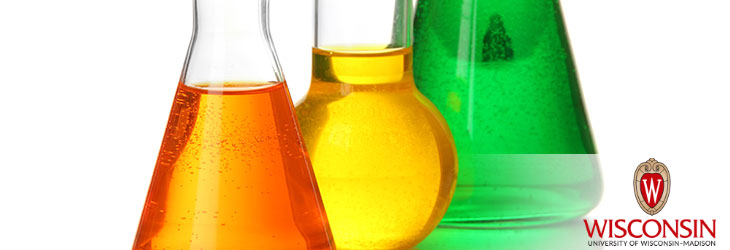Materials & Chemicals

Oxidation-Resistant Coatings for Ultra-High Temperature Ceramic-Based Materials
WARF: P110178US01
Inventors: John Perepezko, Ridwan Sakidja, Patrick Ritt
The Wisconsin Alumni Research Foundation (WARF) is seeking commercial partners interested in developing a method of producing an improved protective coating for ceramic-based substrates that are used in high temperature environments.
Overview
Ultra-high temperature ceramics (UHTCs), SiC-based ceramic matrix composites (CMCs) and cermets are all materials that can be used in high temperature environments; however, these materials need protective coatings to endure extreme temperature conditions. The coatings also may need to be resistant to damage and degradation from elements such as sand. Conventional coatings for protecting ceramic materials from oxidation are acceptable for a range of high temperatures, but volatile SiO(g) can form above 1350°C, which degrades oxidation-resistant properties. Similarly, current methods for protecting ceramics from sand utilize a glass overlay, sealant or de-wetting layer over an underlying thermal barrier coating; however, these coatings crack and erode as a result of thermal cycling. An improved protective coating for ceramic substrates that are used in high temperature environments is needed.
The Invention
UW–Madison researchers have developed alumina coatings that form protective, oxidation-resistant scales on ceramic substrates at high temperatures. The method for coating the ceramic-based substrates involves a two-stage deposition process. This process comprises depositing a layer of molybdenum metal onto a surface of the substrate and subsequently co-depositing silicon and boron onto the layer of molybdenum in the presence of alumina to form a continuous MoSiB coating. Ceramic-based substrates that can be coated in accordance with this method include ultra-high temperature ceramics, fiber-reinforced matrix composites and refractory metal cermets.
Applications
- Jet engines
- Hypersonic vehicles
- Thermal electrodes
Key Benefits
- Reduces or inhibits the formation of volatile species in the scales that form at high temperatures
- Reduces the rate at which oxygen diffuses through the scale
- Can provide protection from reactions involving the coating and sands
- Also can provide protection from sand infiltration into the coating
Stage of Development
Coatings on SiC-C samples and ZrB2 have been produced and tested with good results; the samples withstood the extreme exposures of arc-jet testing and CMAS attack.
Additional Information
For More Information About the Inventors
Related Technologies
For current licensing status, please contact Emily Bauer at [javascript protected email address] or 608-960-9842